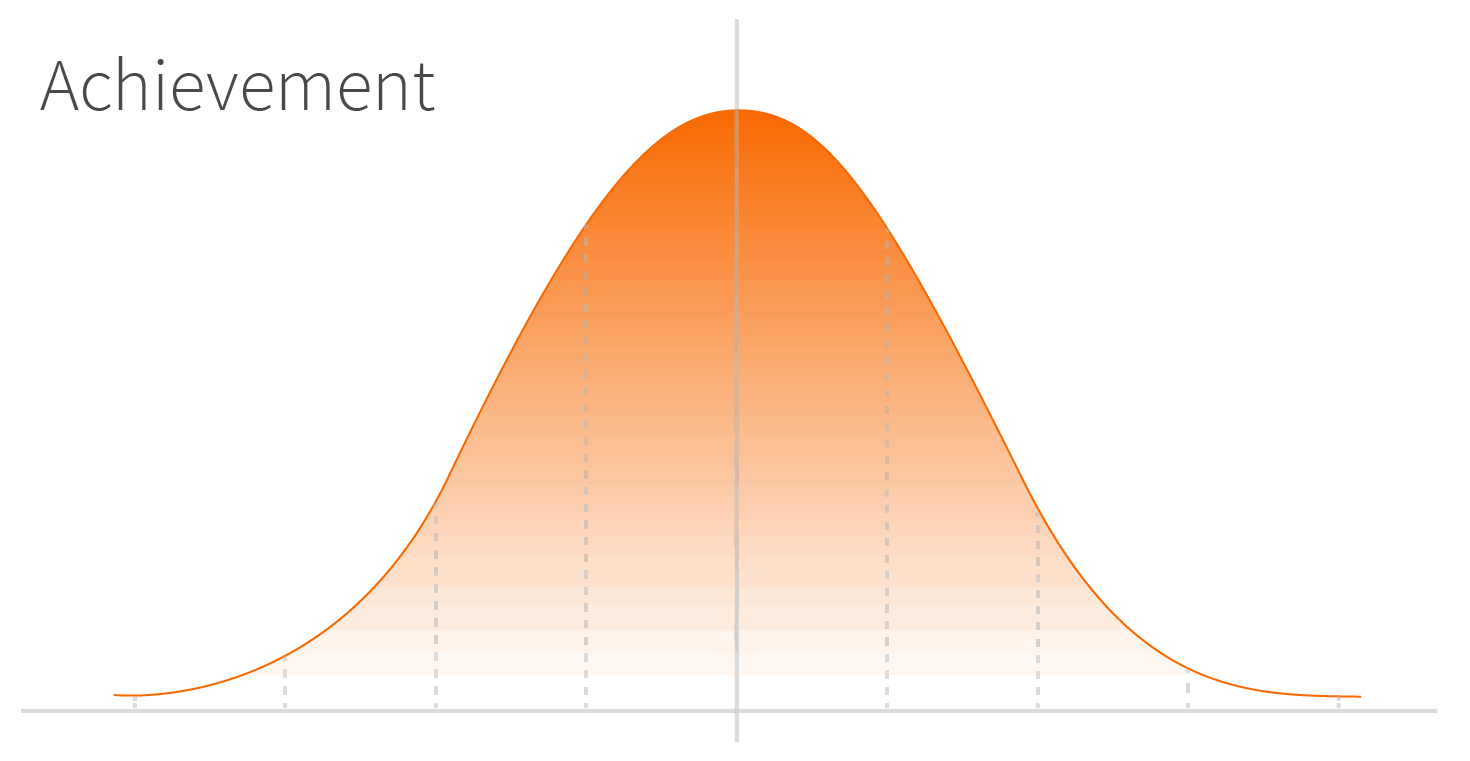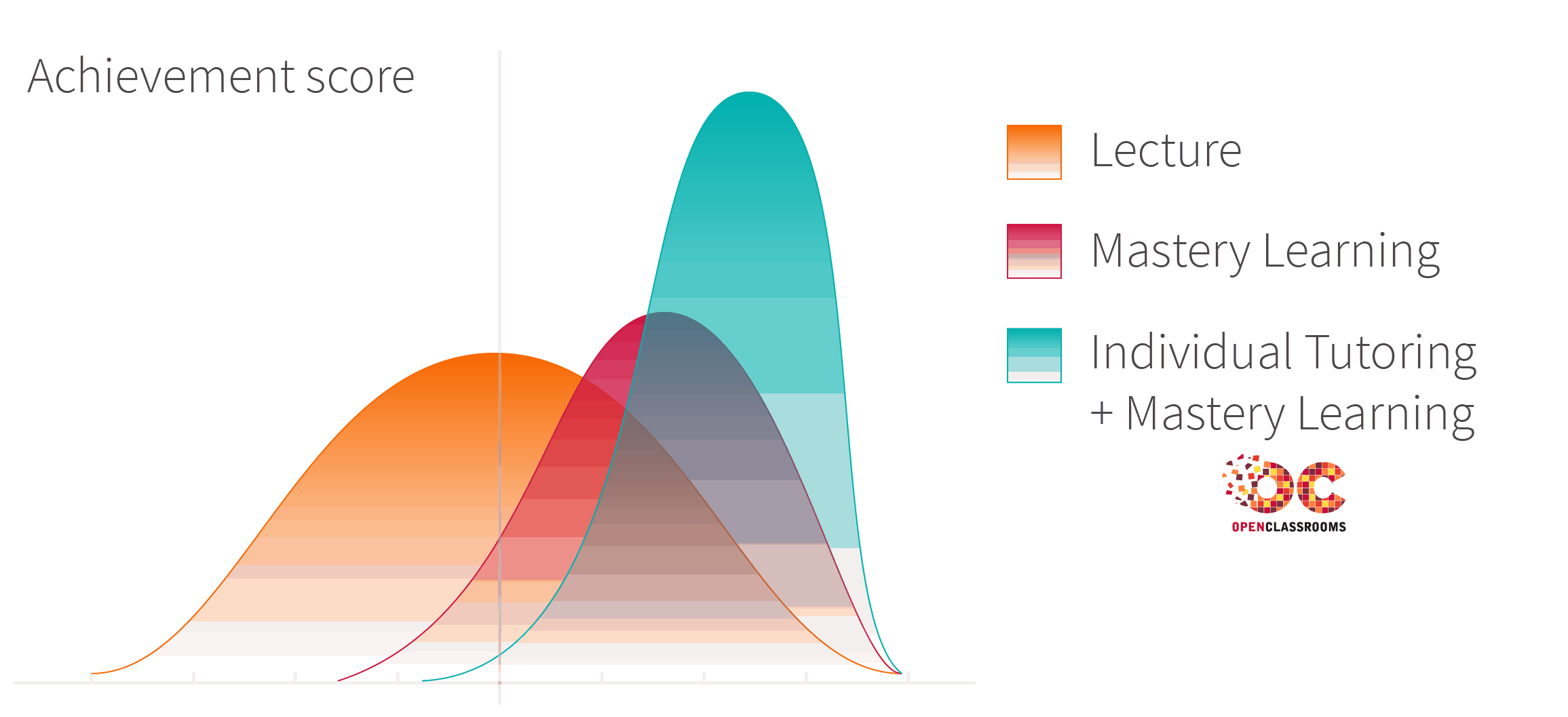Solving The Education Conundrum Of Our Time: Bloom’s 2 Sigma Problem
Mathieu Nebra describes Benjamin Bloom’s breakthrough discovery in education from the 1980s, and then looks at why it wasn’t possible to scale the methods — until now.
This is a guest post from Mathieu Nebra. Mathieu is co-founder of the largest vocational EdTech platform in Europe, OpenClassrooms. The platform specializes in online learning for the digital sector that helps people to become and remain employable, and it was the first to introduce mentor-led learning. As well as writing and producing his own courses, Mathieu is trying to shape the future of online learning by experimenting with different teaching methods.
In the early 80s, renowned educational psychologist Benjamin Bloom made a breakthrough discovery. Examining teaching and learning techniques, he found a way to drastically improve student performance, helping average students perform better than 98 per cent of their “traditional classroom” contemporaries.
Having discovered a way to improve education efficiency by several orders of magnitude, he could deliver results for students that far outstripped the standards expected of them. However, Bloom also faced a significant challenge – his technique wasn’t scalable.
More than 30 years later, Bloom’s core principles can finally be applied, and technology is only part of the answer.
Bloom’s 2 Sigma Problem
In 1984 Benjamin Bloom discovered a method for drastically improving educational efficiency, delivering results that are improved by a factor of two standard deviations (two sigma). His method would mean that the “average” student within a given class could now perform better than 49 out of every 50 students within a traditional classroom setting.
Looking at this discovery in a graphical form, a traditional classroom’s results would generally be distributed in a symmetrical bell curve like this:
However, using Bloom’s technique, a classroom could achieve far more impressive results, distributed like this:
Bloom’s secret sauce? The combination of two education approaches: mastery learning and one-to-one tutoring.
- Mastery learning: Each student must achieve true mastery of a topic before moving on to the next, more advanced subject. The student is given the time to study the topic until they succeed in achieving this mastery, even if that takes longer than other students. Time is the one constant in a traditional classroom setting, with lessons squeezed into set periods, leaving no room for different learning rates or individual student needs. With a focus on mastery learning, achievement becomes the constant.
- One-on-one tutoring: Each student is provided with a personal tutor who guides them through their learning, suggesting specific exercises and unlocking the individual student’s potential on an ongoing basis and ensuring they truly “get” the subject.
Given the impact of Bloom’s discovery, one might expect these techniques to be applied everywhere by now, but this just isn’t the case. Why?
One underlying reason is the resistance to change that can be seen throughout the academic world. Bloom’s new approach to teaching was significantly different to the system in place, meaning that it was naturally met with scepticism and reluctance.
But more important is the time and resource-intensive nature of Bloom’s method. As an approach that’s new to the majority of teachers, substantial time would be needed to set up a mastery-oriented teaching framework, and the move away from hour-long teaching blocks would be hugely disruptive to the traditional learning environment.
Plus, the requirement for one-to-one tutoring would be time and cost-intensive, and incredibly difficult to implement for large groups of students.
To circumvent this, Bloom tried to find other ways to produce his Two Sigma effect, but to no avail. Nothing was as effective as a combination of mastery learning and one-on-one tutoring. The challenge of scalability explains why Bloom’s approach to learning development has not been widely adopted, but that is set to change.
Mentoring matters
The most effective education arguably revolves around three pillars: high quality course materials, skilful teaching, and accurate assessment. This is true of both online and offline learning, but we’ve now reached a point where reliable connectivity and sophisticated software mean that online education can deliver all three of these aspects, at scale, supported by Bloom’s focus on mastery and one-to-one tutoring.
Self-paced learning is a feature of most online learning, and it lends itself well to mastery. By providing clear, accessible, digital course materials, students can work through exercises at their own pace.
One-to-one mentoring, however, remains a stumbling block. Although the importance of mentoring cannot be underestimated, it is simply something that the vast majority of online learning platforms don’t deliver in any meaningful way. Having someone nurture an individual’s learning, test their understanding of a topic, and provide support and reinforcement as needed transforms development.
At OpenClassroom, our skilled teachers provide individual guidance and support via Skype and Slack, from wherever the student and teacher are based. This is the step that truly removes the hurdle of scalability to Bloom’s Two Sigma problem. Students can be easily connected with a mentor, within an on-demand setting that suits the hectic pace of modern life.
Effective one-to-one mentoring that goes beyond tokenism is an area that everyone in online learning needs to address if MOOCs are going to achieve the level of credibility the industry desires, and if it is going to deliver highly competent, workforce-ready employees.
This is a guest post from Mathieu Nebra. Mathieu is co-founder of the largest vocational EdTech platform in Europe, OpenClassrooms.









Mike Adams
Thanks for sharing nice information with us. For children’s it is very important to select the right career option. Selecting the right career offers successful future. Thanks for the blog. Keep sharing more about education and career planning.
Ali
We live in truly exciting times now that the scalability of Blooms discoveries are possible. Supporting the creation of workforce ready employees begins with sigma 2 style approach and facilitating learning through ‘in the moment’ tech like Skype and Slack – which are commonly used in the workplace – and so also have the benefit of orientating people to the culture of the world of work. The traditional model of education prepared people for the world of industrial era work and that is why it was so successful but we need to shift that now to reflect today’s digital era. Great article.